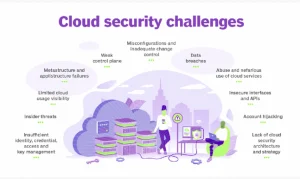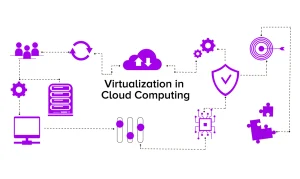It revolves around the cloud. Opting for the cloud, rather than local storage, yields substantial cost savings and offers unparalleled convenience at scale.
While the cloud boasts advantages like speed, cost-effectiveness, resilience, global accessibility, security, and innovation, it brings distinct security challenges that concern 99% of companies.
Explore further to understand these issues, their unique challenges, and adopt best practices to enhance your organization’s security posture, effectively mitigating cloud-related threats.
What is Cloud Security?
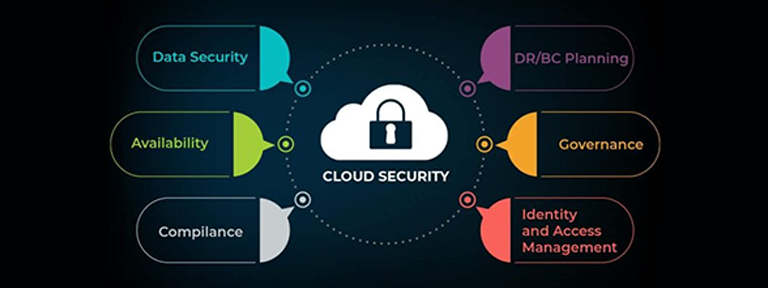
Cloud Security encompasses a range of security technologies, controls, and practices aimed at safeguarding an organization’s IT infrastructure within the cloud.
In simpler terms, it consists of security measures tailored to shield cloud-based infrastructure, data, and applications from cybersecurity threats.
As organizations embrace digital transformation, remote work, and integrate cloud-based tools, a robust cloud security strategy becomes imperative.
Why Cloud Security is important?
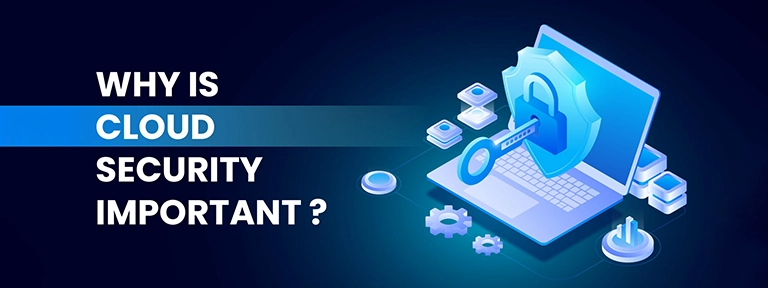
In straightforward terms, your business relies on the cloud, making its security synonymous with the security of your business. Whether you’re a bank with critical applications in the cloud, a real estate developer using cloud-based project management, or a manufacturer with automated facilities, prioritizing cloud security is imperative. It shields your company from threats like Distributed Denial of Service (DDoS) attacks, malware, hacking, and unauthorized access to company data.
Given that businesses store sensitive information such as customer financial details, intellectual property, and sales records, any leaks could result in irreparable damage. Therefore, safeguarding this data through robust cloud security measures is paramount for the overall well-being of your business.
Top 7 Cloud Security Challenges

Navigating Cloud Security proves intricate for many organizations. Yet, anticipating common challenges beforehand empowers your organization to proactively tackle and surmount them.
Here are the top seven prevalent cloud security challenges your organization must recognize and be ready to confront in advance, no matter the cost.
Unmanaged Attack Surface
The surge in cloud adoption expands the pool of publicly accessible assets for organizations, contributing to an unmanaged attack surface.
For those unfamiliar, the attack surface signifies the overall exposure in your network, serving as potential entry points for unauthorized access and data breaches.
Without a centralized solution like CAASM, your organization’s network may stay vulnerable in ways unknown until a cyberattack strikes.
By then, addressing the issue becomes belated, leading to data theft, reputational harm, and diminished customer trust in your business.
Inefficient Cloud Migration
The pace of cloud migration is skyrocketing across global organizations. When contemplating a move to the cloud, ensure it’s executed meticulously to avert unnecessary risks. Address existing network vulnerabilities before the migration, as the cloud introduces its own security challenges.
Beyond current vulnerability assessments, implement robust protocols for securing sensitive data prior to cloud transition. Understanding existing threats, crafting a migration plan to mitigate security risks, and then initiating the cloud migration process are vital steps in this regard.
Shadow IT
Shadow IT presents a widespread and intricate challenge in cloud security. Without essential cloud security measures, it can bypass your organization’s standard IT approval and management processes. In simple terms, Shadow IT emerges when employees independently use various cloud services for their tasks, posing difficulties for security teams in controlling workload and asset growth.
For instance, implementing DevOps introduces complexities in obtaining comprehensive visibility and management controls without disrupting the DevOps cycle. To address this, organizations must embrace a unified approach to access essential cloud security information without impeding or decelerating the DevOps workflow.
Misconfigurations
Misconfigurations stand out as a prominent factor behind global cloud data breaches. The challenge arises from cloud infrastructure designed for seamless data sharing, complicating efforts to restrict sensitive data access solely to authorized personnel. Organizations using cloud infrastructure often lack complete control and visibility, relying on security controls provided by cloud service providers.
Given the complexity of securing diverse cloud deployments, misconfigurations are common, especially as each provider employs a distinct set of security controls. This vulnerability leaves an organization’s cloud infrastructure and resources susceptible to exploitation by hackers.
Maintaining Regulatory Compliance
Ensuring Regulatory Compliance poses a significant task for organizations utilizing cloud infrastructures, obligated to meet standard regulations like HIPAA or PCI DSS safeguarding customer-sensitive data. Compliance involves restricting access and actions related to sensitive data, typically achieved by isolating specific parts of the cloud accessible only to authorized personnel. However, demonstrating or achieving regulatory compliance becomes challenging when migrating such sensitive data to the cloud. Inadequate access controls can render monitoring network access nearly impossible, as organizations maintain control over only certain layers of their cloud infrastructure. This deficiency often results in a failure to uphold regulatory standards, risking unauthorized access to sensitive customer data. To surmount this challenge, organizations must adopt a robust cloud security solution, offering technical capabilities to comply with regulatory requirements. Such a solution not only ensures complete visibility into an organization’s cloud infrastructure but also pays meticulous attention to safeguarding sensitive data.
Lack of Visibility
In the realm of cloud computing, accessing and storing data online brings unparalleled convenience for businesses, but it also introduces risks. Protecting data from unauthorized access and theft becomes paramount. The reliance on remote servers in cloud computing presents security threats. To safeguard systems from unauthorized sources, businesses should adopt security measures like robust authentication, data loss prevention (DLP), and effective response mechanisms for data breaches.
Visibility is crucial in the cloud computing landscape. Regular security audits and proactive monitoring help businesses identify vulnerabilities and threats before they escalate. By implementing necessary precautions and adhering to security best practices, organizations can maintain the security of their data within the cloud-based environment.
Hijacking of Accounts
Account hijacking poses a significant threat in the realm of cloud security. Utilizing cloud-based applications and services heightens the risk of this security breach. To remain secure in the cloud, users must exercise vigilance in safeguarding passwords and confidential information.
Users can fortify their defense by employing robust passwords, answering security questions, and implementing two-factor authentication for account access. Monitoring account activity and taking preemptive measures against unauthorized access further enhances security, preventing hackers from compromising data or hijacking accounts. Maintaining vigilance, along with regular security updates, is crucial for robust cloud computing security.
Best Solutions To Overcome Cloud Security Challenges
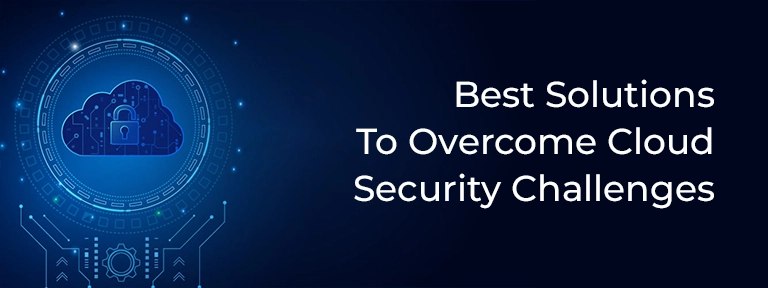
Addressing cloud security challenges requires proactive measures. Here are some top solutions to overcome these issues:
- Comprehensive Training and Awareness:
Educate employees about potential security threats associated with cloud usage. Enhance awareness to reduce the likelihood of unintentional security breaches.
- Implement Robust Access Controls:
Enforce stringent access controls to restrict unauthorized access. Employ multifactor authentication and least privilege principles to enhance security.
- Regular Security Audits and Assessments:
Conduct regular audits to identify and rectify misconfigurations, vulnerabilities, and potential security gaps. This ensures continuous improvement in security measures.
- Utilize Cloud Security Solutions:
Invest in specialized cloud security solutions that offer features like intrusion detection, encryption, and threat intelligence to fortify your defense against cyber threats.
- Develop and Enforce Security Policies:
Establish clear and comprehensive security policies governing cloud usage. Ensure adherence to these policies throughout the organization to maintain a secure cloud environment.
- Continuous Monitoring and Incident Response:
Implement continuous monitoring tools to promptly detect and respond to any security incidents. Having a robust incident response plan is crucial for minimizing damage in case of a breach.
- Collaborate with Cloud Service Providers:
Work closely with cloud service providers to understand their security features and best practices. Leverage their expertise to enhance the security of your cloud deployments.
- Regular Staff Training and Skill Development:
Invest in ongoing training programs to keep IT staff updated on the latest cloud security threats and best practices. Skilled and informed staff are key to effective security management.
- Encrypt Sensitive Data:
Prioritize the encryption of sensitive data both in transit and at rest. This adds an extra layer of protection, making it more challenging for unauthorized parties to access valuable information.
- Incident Response Planning:
Develop and regularly update an incident response plan. Ensure that your team is well-prepared to respond swiftly and effectively to any security incidents.
By adopting a proactive and multi-faceted approach, organizations can strengthen their cloud security posture and navigate the evolving landscape of cyber threats.
Wrapping Up:
The benefits of cloud migration, such as cost reduction, scalability, and agility, are increasingly recognized by organizations.
However, concurrent challenges demand careful consideration, especially when migrating critical business data.
Neglecting this caution may lead to misconfigurations and vulnerabilities, expanding the risk of cyberattacks.
Hence, organizations must proactively identify and address cloud security challenges to prevent potential consequences like data breaches or identity theft. Embracing the suggested cloud security solutions enables organizations to effectively manage, navigate, and resolve common challenges associated with integrating the cloud into their network.







